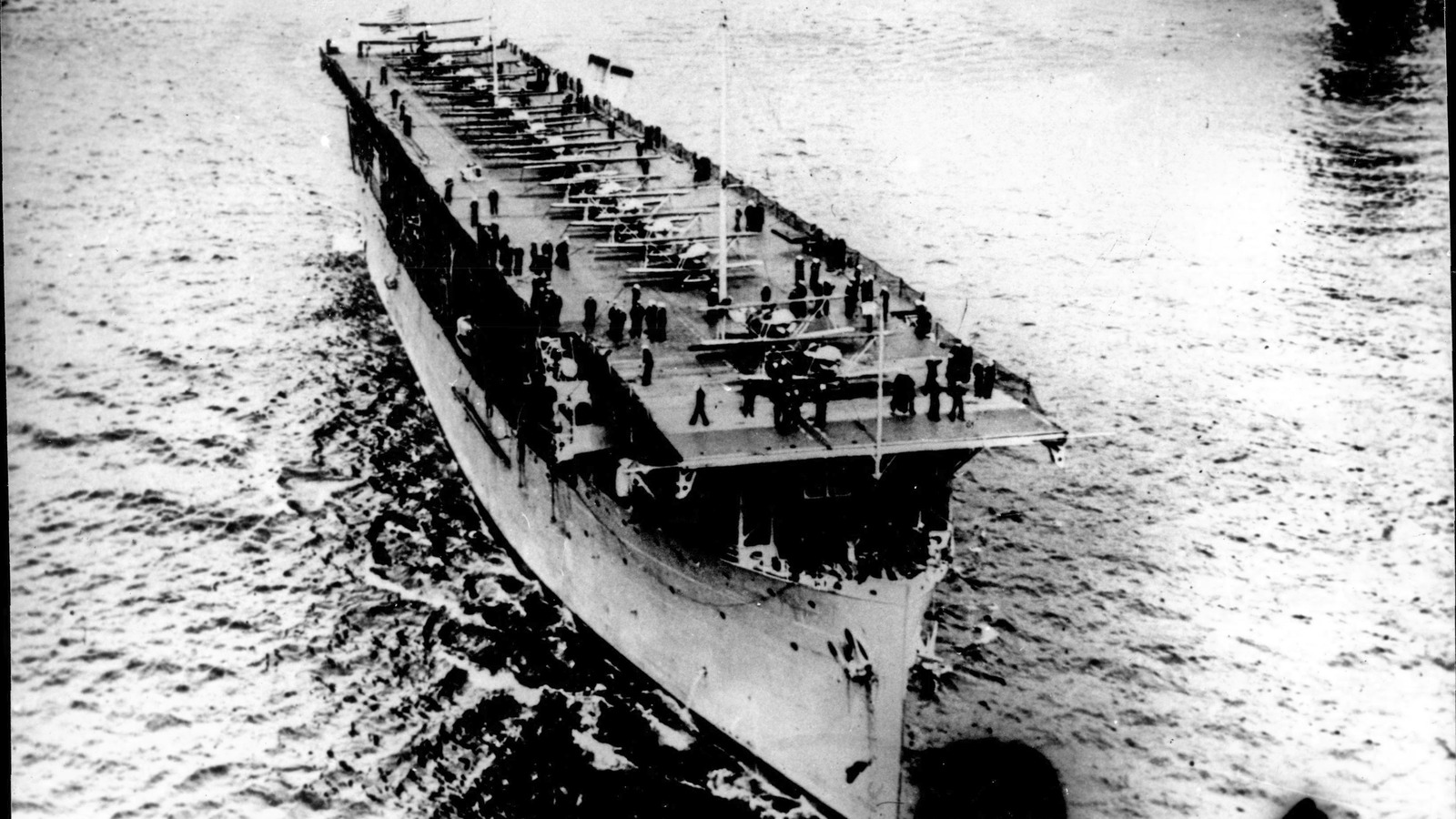The USS Jupiter entered service in 1913 as a collier, and she was the first U.S. ship powered by turbo-electric power. The Jupiter’s lack of a steam turbine ensured she was faster than her sister ships — the USS Cyclops and Neptune. The Jupiter initially served in the Pacific, and when it crossed the Panama Canal, it was the first vessel to do so from east to west. She didn’t see any action during World War I, and on July 11, 1919, the Navy authorized her conversion into an aircraft carrier.
The Jupiter was then decommissioned the following March and her conversion began. On April 21, 1920, she was reclassified CV-1 and renamed the Langley, becoming the first U.S. aircraft carrier. While she was initially built for that purpose, from 1920-on, the Langley was no longer a collier. Much of the Langley’s early service record involved testing naval aviation, including launching planes and recovering them while underway.
When she was recommissioned, the Langley’s design accommodated a surprisingly high number of aircraft. Some modern carriers can support as many as 90 fighter jets, but initially, the number was much lower. That said, the Langley’s ability to carry up to 34 airplanes was a monumental achievement in 1922. The Langley could support 12 single-seat “Chasing” aircraft, another dozen two-seat “spotters,” and ten planes outfitted to drop torpedoes at speeds up to 80 knots (92 mph) into the water.







